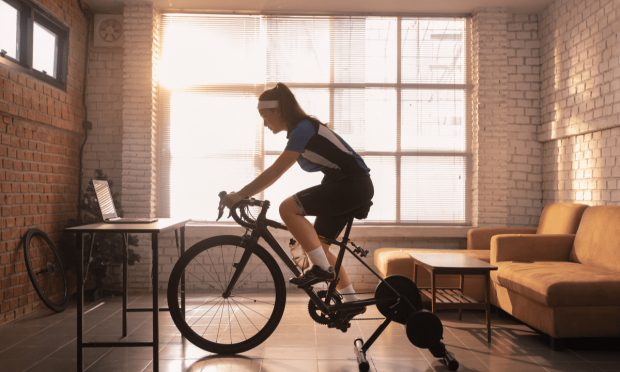The Peloton Problem And The Shifting Future Of Fitness

With the global pandemic making a trip to the gym feel more like a health risk than exercise has any right to reasonably be, consumers have spent the past eight or so months rewiring their fitness routines around their homes — turning garages and spare bedrooms into their personal high-tech gyms.
That means that for those who make connected home fitness products, 2020 has been a real workout as demand for their goods has skyrocketed. Connected products allow consumers to enjoy the group-fitness experience virtually, via specialized (and generally quite expensive) bikes or mirror hardware.
But with sudden success comes troubles. In connected bike giant Peloton’s case, that trouble has come in the form of keeping up with exploding demand for its products. That’s particularly true heading into the holiday season, when consumers are even more likely to make the big splurge on a $2,000+ connected bike.
“As we rapidly scale our organization to meet the extraordinary demand for our products, we realize that some of our members have faced extended delays associated with receiving our products or having support requests fulfilled,” Peloton CEO John Foley noted in a recent letter to shareholders.
According to recent reports, that’s putting it a bit mildly. A month of shipping delays is now common — pushing people off of the product entirely. Social media is increasingly filled with complaints from would-be Peloton customers who are fed up with waiting and canceling their backlogged orders.
“I was so looking forward to being a new [Peloton +] client but after your horrendous delivery delays and telling me 12 hrs before I took off of work that you were rescheduling another 8 weeks out into January I canceled everything,” one user wrote on Twitter. “Just horrible.”
The complaints on Twitter carry on like that — long waits, lousy attempts at delivery and annoyed customers increasingly looking elsewhere.
So Where Else To Go?
Many consumers are reportedly bailing on Peloton, but not on the connected-fitness concept in general. Instead, they’re simply looking to rival manufacturers.
For example, the connected product by Mirror — a company which allows users to attend fitness classes, and which Lululemon earlier this year agreed to buy — has seen sales heat up (and wait times expand).
One New Hampshire woman told The Wall Street Journal that after seven weeks of unrewarded waiting for a Peloton, she simply bought a NordicTrack connected treadmill instead. The paper said Nautilus has also seen a lot of irritated Peloton customers switch over.
But those fitness products aren’t immune to the same supply chain pile-ups that are currently deviling Peloton. Nautilus CEO Jim Barr told the Journal his company was facing shipping delays as well.
That means that no matter what piece of smart tech customers order, they might be waiting quite a while.
Of course, there’s always the option of going back to the gym. But with COVID-19 case numbers currently skyrocketing nationwide and shutdown orders going back into effect, it’s far from clear that fitness-minded consumers will want to return to gyms while they wait for Pelotons they presumably ordered to avoid working out in public. A recent PYMNTS consumer survey with PayPal found that a majority of consumers, 58 percent, report they would need to know that a COVID-19 vaccine was readily available before feeling comfortable returning to their pre pandemic routines, while 38 percent report a vaccine is the single most important prerequisite to their returning to their pre pandemic lifestyle.
And even if they do want to head back out there, it’s not clear they’ll even be allowed to do so, since shutdown orders are already going back into effect and are widely anticipated to continue through year’s end.
That leaves the option actually getting outside and running, skiing, riding a real bike or rowing an actual boat. On the upside, those things are all relatively low-tech — and much more affordable, authentic and accessible than their digitized counterparts.
On the downside, winter is coming in the Northern Hemisphere, and it takes a lot of commitment to getting or staying fit for those in colder climates if one has to freeze while doing so.
That means many Americans might just prefer to wait it out until their connected devices can get to their doors. That could be the most comfortable, COVID-resistant way to stay fit while staying in the safety and comfort of their own homes.
